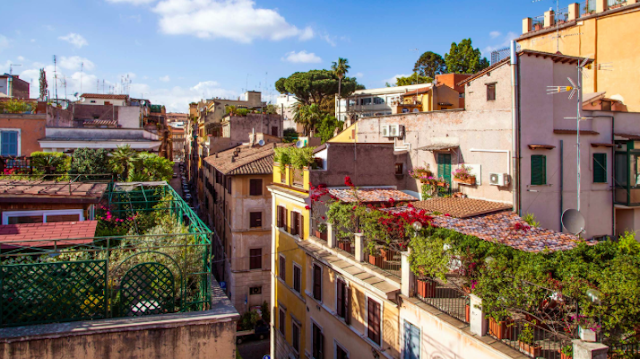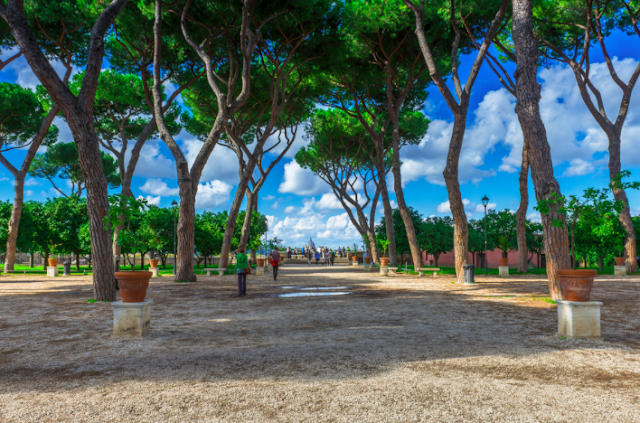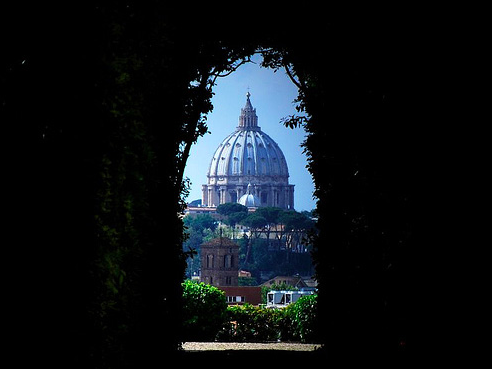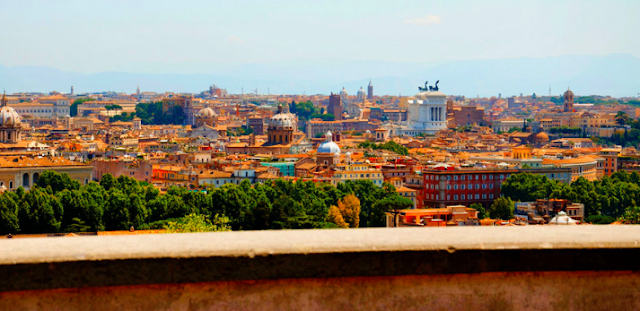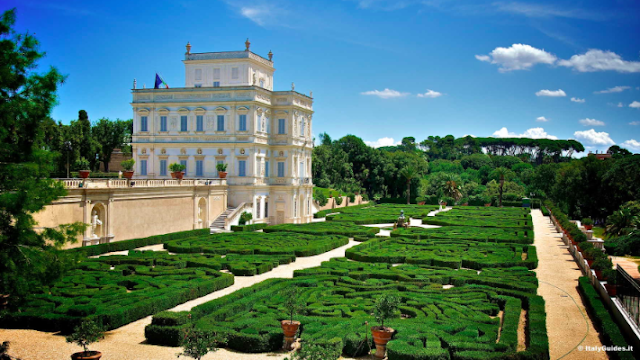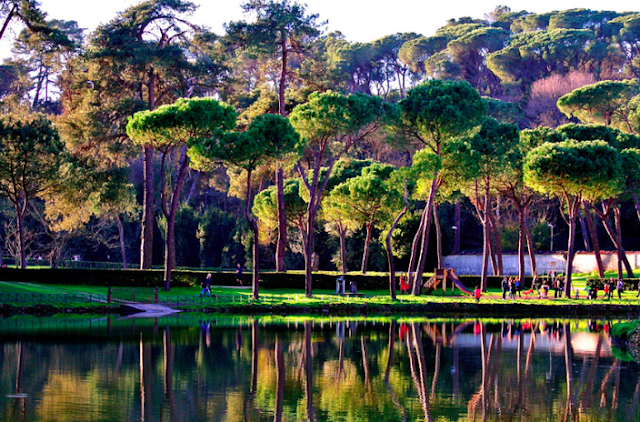HIDDEN GEMS OF ROME:
Off the beaten path places you shouldn’t miss when visiting the Italian capital
Getting to know the whole Eternal City would take a while, some say even a lifetime spent in Rome is not enough for exploring all the beauty the city has to offer. Imagine if you have only a few days and want to get the essential feeling and atmosphere! In order not to miss out any of the must-see sights, it is a good idea to join an organized tour, making sure you not only see the famous places but you also hear all the interesting facts about them.
However, there are quite a few beautiful spots in Rome that are not on the visitors’ checklist simply because they are a bit hidden, therefore, not many tourists know about them and they are not considered as must-see sights of Rome (yet). Now, we will introduce you the most amazing hidden gems of the city so that the next time you come, you can check them out!
1. Monti
Surprisingly, the district is still hidden and many visitors miss to explore it because they choose the main roads to reach their destinations. They don’t know that Monti, just like an unopened treasure box, is waiting for them to discover all its charming beauty and secret locations.
Monti wasn’t always the enchanting urban village that it is nowadays. In ancient times, it was called Suburra and was the region for poor people, also functioning as a red light district full of brothels and prostitutes. It remained the district of lower-class workers until the 1930s when the gentrification begin due to the constructions of Via dei Fori Imperiali, the road that now divides Forum Romanum from Monti.
Since then, Monti has emerged into a bohemian, chick district where ancient meets trendy and vintage meets modern. It is a great mixture of old and young, classic and hipster, a cool combination of urban and village-like elements. Monti looks like a typical Italian movie scene: cobblestoned narrow streets, little piazzas with water fountains, ivy-covered buildings, Vespa motorbikes in the corner, cafés, art galleries and unique, local shops all around. Citizens are enjoying their coffee in the sunshine, artists are smoking their cigarettes in front of their chic galleries, restaurant owners are arguing with their suppliers about the quality of the delivered ingredients.
Monti looks similar to Trastevere, another popular area of Rome but the latter one is more crowded with tourists and has a less authentic atmosphere.
There are many great places for eating out, having a merenda (afternoon snack) or grabbing few drinks in the evening. The center of the region is Piazza della Madonna dei Monti, a square with a water fountain in the middle where people gather around and have a beer or two, gossip, chit-chat or eat their take away food. This is another great characteristic of Monti: it offers a wide range of delicious street food from various cuisines. You can get pizza al taglio (square slices of pizza), paninis, pasta in a box, salads and fruit juices, piadina, gelato and even pancakes for take away at different foodie places, most of them located on Via Urbana, Via del Bosschetto, Via dei Serpenti and Via Leonina. In case you prefer a restaurant or trattoria to enjoy your meal for a longer time, you will also find several nice Italian and international places.
Monti is also a good area for shopping hand-made designer or unique vintage clothing, accessories, souvenirs and furniture. Not only the cute local shops but also Mercato Monti, the urban designer market held on weekends provides you the opportunity for treasure hunting the best one-off pieces.
2. Orange Garden (Giardino degli Aranci)
Sounds promising, a garden full of orange trees, right? Wait until you get there and see the amazing view over the city, including the cupola of St. Peter’s Basilica and the white monument of Altare della Patria! The park is located on one of the seven hills of Rome, called the Aventine Hill. It is very close to the famous sight, the “Mouth of the Truth” (Bocca della Veritá) and also to the Circus Maximus but many people miss visiting it because they don’t know about this magical place. From the Mouth of Truth, you just have to walk a bit south, parallel to the River Tiber and then you need to climb a hill on the left side. If you start from Circus Maximus, find the road called Clivo dei Publicii and just follow it uphill until you reach the garden. There is a nice fountain consisting of a marble face spitting out water to a bathtub right at the entrance of the park (Fontana del Mascherone di Santa Sabina ). On the western side of the Orange Garden, you can find the Basilica Santa Sabina built in the 5th century and known for it’s authentic and simple style as well as for being the mother church of the Dominican Order in Rome.
The Orange Garden is a one of the best spots in Rome for watching the sunset and during summer days you can even enjoy theater plays in the park.
3. Rome’s Secret Keyhole
The Keyhole is another secret of Rome and even people who spend months in the Eternal City miss out visiting it. The Keyhole is located a few hundred meters to the West of the Orange Garden, also on the Aventine Hill. It’s on the door of the headquarters of Knights of Malta and it is really just a small keyhole – but once you look through it, you will understand why it is so impressive and why it is kept in secret from the tourist crowds. You will see a garden, a tunnel of bushes and at the end, Vatican City with St. Peter’s Basilica itself. We suggest you bringing your camera with you for taking pictures because smartphones are not able to focus through the hole and you won’t be able to capture the view. Usually there are not many people around but you might have to queue up a little bit.
4. Gianicolo
Gianicolo or the Janiculum Hill is located on the west side of the River Tiber, just above the Trastevere district. It is a great viewpoint but surprisingly it is not one of the Seven Hills of Rome. You can reach it either by walking up, by taking bus No.115 or 870 or even by car/motorbike.
From the top you will have a great panoramic view over the city and from one side you can also have a close look to St. Peter’s Basilica. In the middle of the square, there is the statue of Giuseppe Garibaldi, proudly sitting on his horse. Every day at noon, a real cannon shot is indicating the time, a tradition dating back to the 19th century when the pope wanted to know the exact time for setting the bell towers of Rome.
Close to Gianicolo there is a beautiful but lesser known fountain of Rome which looks as stunning as the Trevi fountain but thanks to its hidden location, it is never too crowded. The Fontana dell’Acqua Paola or Il Fontanone (“The big fountain“) was built in 1612 and it was marking the end of the Acqua Paola aqueduct. Both the fountain and the view are amazing from the piazza where it stands. If you saw the movie The Great Beauty (La Grande Bellezza, directed by Paolo Sorrentino), you will immediately recognize this place: the opening scene of the film is set right here.
5. Villa Doria Pamphili
Located behind Gianicolo also on the Janiculum Hill, Rome’s largest park is off-the-beaten path and rarely visited by tourists. It is so huge that you can surely spend a whole day there without getting bored. You can reach it by walking from Trastevere or taking bus No. 870.
Right at the entrance you can spot a unique and very Roman object: a drinking fountain, called nasone (big nose). This particular one is special because it looks like the water is coming from the mouth of a wolf, the symbolic animal of Rome. The entrance of the park is already stunning: it is called the “Horse of the Four Winds” Arch and serves as a gateway to the garden.
Many local people come here for relaxing, running, having picnic, walking their dog or just to escape from the city. It is full of typical Roman stone pine trees (called pino) and green parrots that are now inhabiting all the public parks.
The park is named after the Pamphili family which was one of the papal families, possessing great influence over religious and political issues in the 16th and 17th centuries in Rome. Later they merged with the noble Doria family, this is where the name comes from. They were the owners of the villa and the huge garden belonging to it. From the size of the park and the numerous fancy buildings within, you can imagine how rich the Pamphili family was and what kind of luxurious lifestyle they led.
The main building is called Casino del Bel Respiro (Country House of the Beautiful Breath), and notice that the “casino” word did not have the same meaning as today. Unfortunately, you cannot enter the old villa but you can go upstairs next to its wall and have a nice view of the building and its secret garden with the lemon trees and the labyrinth-like hedges.
In front of the villa you can find a bunch of orange trees and the impressive Fontana di Cupido (Cupido’s fountain). On the other side of the meadow you will find the chapel of the family which feels a bit ouf of the park’s general style with its golden Byzantine elements.
All in all, people with diverse interests can find their place in Villa Doria Pamphili. For those who prefer cultural activities, there is also a theater and a library in the park and open-air theater plays are organized during summer time. The big meadow located to the west of the old villa is a great spot for sporty folks for playing soccer or volleyball. Those who prefer romantic walks, there are many hidden paths within the park and there is a nice spot from which you can spot St. Peter’s Basilica.
6. Villa Ada
Villa Ada is the second largest park of Rome but due to its northeastern location, it is neglected by visitors who come for only few days. It might not be the most preferred attraction of the city but in case you have time or you are near Parioli district, it’s definitely worth a visit as it is more authentic and less touristy than the most famous parks of the city. Moreover, the Catacombs of Priscilla are located on the eastern side of Villa Ada and it could be a good alternative if you don’t have time to visit the bigger Catacombs on the South of Rome.
Local people come here for relaxing, walking their dogs, jogging, having picnic or taking their kids on the playground. The sport-lovers can enjoy free street workout equipments and the huge meadows are perfect for practicing football to become the next Totti of the season.
An artificial lake and an island in the middle of the park serve as the epicenter of cultural entertainment during summer season. There is an ongoing open-air festival during the warmest months with concerts, movie nights, workshops and diverse programs.
Some parts in the park feel like a wild forest where you can escape from the urban environment and even forget that you’re in a busy capital city.
The fact that the Egyptian Embassy is also located here and the LUISS Guido Carli University, ranked as the second best Italian business school can be found at the southern entrance of Villa Ada shows how many important roles a well-kept public park can play in Rome’s daily life.
We hope you get some inspiration from our list so that you can visit these stunning places the next time you come to Rome!
Written by: Jokkel Dora
If you liked this article, read also “5 WAYS ITALY WILL FASCINATE NON-ART LOVERS“
